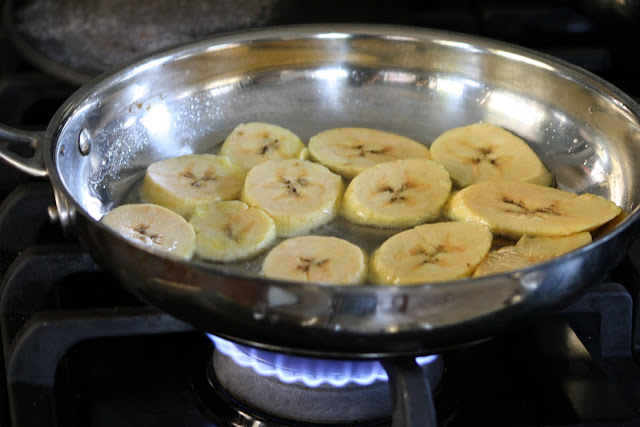The inspiration and recipe for tonight's meal comes directly from my Maldivian friend who goes by the moniker Simply Me. She was kind enough to take the time to send me a few of her favorite recipes, which just so happen to be Sri Lankan. And, while I cannot promise that mine come close to replicating anything she would make, I did feel I had the most excellent consultant guiding me through the process! Over the past few weeks, we have been corresponding via email, talking about our families, life and of course, food. Every time I make a new friend and connection through this blog, I am amazed anew, and so grateful to connect with those I'd likely never otherwise meet. Thank you for your generosity and friendship, Simply Me. And please, check out her beautiful blog!
Located off the southern coast of the Indian Subcontinent, Sri Lanka's rich history dates back some 3,000 years. Known as Ceylon until 1972, Sri Lanka is a South Asian island nation that is surrounded by the Indian Ocean, Gulf of Mannar and the Palk Straight. Nearby are India and Maldives. An important country in the silk road economy, Sri Lanka traded (and continues to export) tea, coffee, coconuts, rubber and cinnamon. Known for it's lush tropical climate and bio-diversity, the country boasts some of the most beautiful beaches in the world. Historically, Sri Lanka is at the center of Buddhist religion and culture, having some of the oldest remaining Buddhist relics and temples. The country's ethnic majority are Sinhalese, with Tamils being the largest minority population. Moors, Burghers, Kattirs, Malays and aboriginal Vedda make up the remaining peoples.
Owing to the Sri Lanka's lush tropical climate, fruits such mangoes, papaya, bannanas, jack fruit and durian are plentiful along with a variety of vegetables. Curried boiled rice and curried vegetables are considered the staple, and are generally hot and sprinkled with spices. Small dishes with vegetables, meat, fish, chicken, beef and mutton are typical. Red lentil dahl (parripu), stir fried mullung leaves, sambol (grated coconut, chilli and spices) are also staples dishes in the Sri Lankan diet which accompany many meals.
Basic ingredients for beef curry
Grind garlic and ginger
Season meet and let marinate for about 20 minutes
Cook til browned, then add tomato sauce - add coconut milk at the end, but do not boil
Sambol ingredients
Grind everything except coconut, which gets added at the end
This stuff is so good, I ate it straight up with a spoon!
A little side dish of sambol for the beef curry - indescribable awesomeness
Beef Curry - (Recipe adapted from - Asian Spicy Recipes)
3 lbs. stewing beef, cut into pieces
3-4 Tbsp. vinegar
1 inch ginger root
6 cloves garlic
1 Tbsp. ground black pepper
1/2 Tbsp. roasted curry powder
4 dried red chilis
2 cardamom pods
8 cloves
4 pieces curry leaves
2 pieces lemon grass, chopped
1 inch rampe
1 stick cinnamon
3 Tbsp. onion, sliced to medium thickness
2 Tbsp. vegetable oil
1 cup tomato paste or sauce
2 tsp. thick coconut mil
Salt to taste
- Crush together ginger root and garlic.
- Cut beef into pieces.
- Add vinegar, crushed ginger and garlic, salt, black pepper curry powder and red chilli.
- Coat the beef pieces well with the spices and set aside for about 1/2 hour.
- Heat the oil in a saucepan.
- Fry curry leaves and rampe.
- Add onions and fry until soft.
- Add the beef and stir until combined.
- Add cinnamon, lemon grass, cardamom, cloves and stir until well mixed
- Add tomato paste (or sauce) and stir until all pieces are well coated
- If the curry is too dry and sticks to the saucepan, add 1-2 cups water & stir
- Close with a lid and allow the beef to cook on slow heat
- Add the thick coconut milk (or fresh milk) and bring to a boil without covering
- Add salt
2 cups grated fresh coconut
2 small pearl onions or shallots, sliced
1 clove garlic, sliced
1 small green chili, sliced.
1-2 tsp. hot red chili powder
1 tsp. salt
1 medium lime
- Grind or chop all ingredients in a grinder or chopper (except coconut)
- Add the coconut once all ingredients are crushed and mixed thoroughly
- Now grin all ingredients until the coconut turns evenly red and all ingredients are well mixed. Squeeze in half a lime. Mix well.
- Taste and adjust salt and lime according to your preference.
- Serve with rice and curried beef or bread.
© 2010-2011, What's Cooking in Your World? Sarah Commerford/All Rights Reserved















































